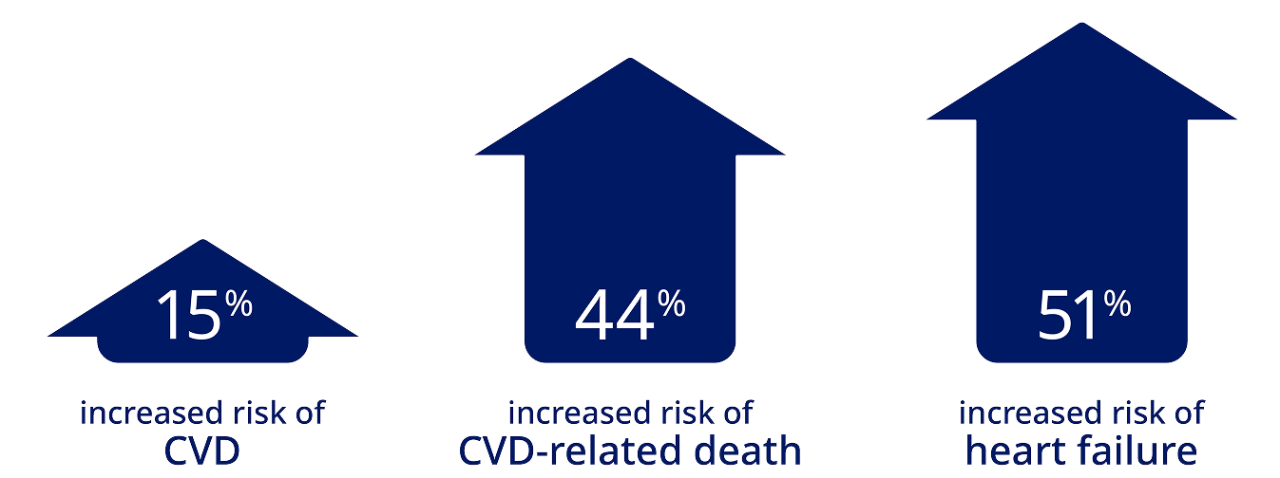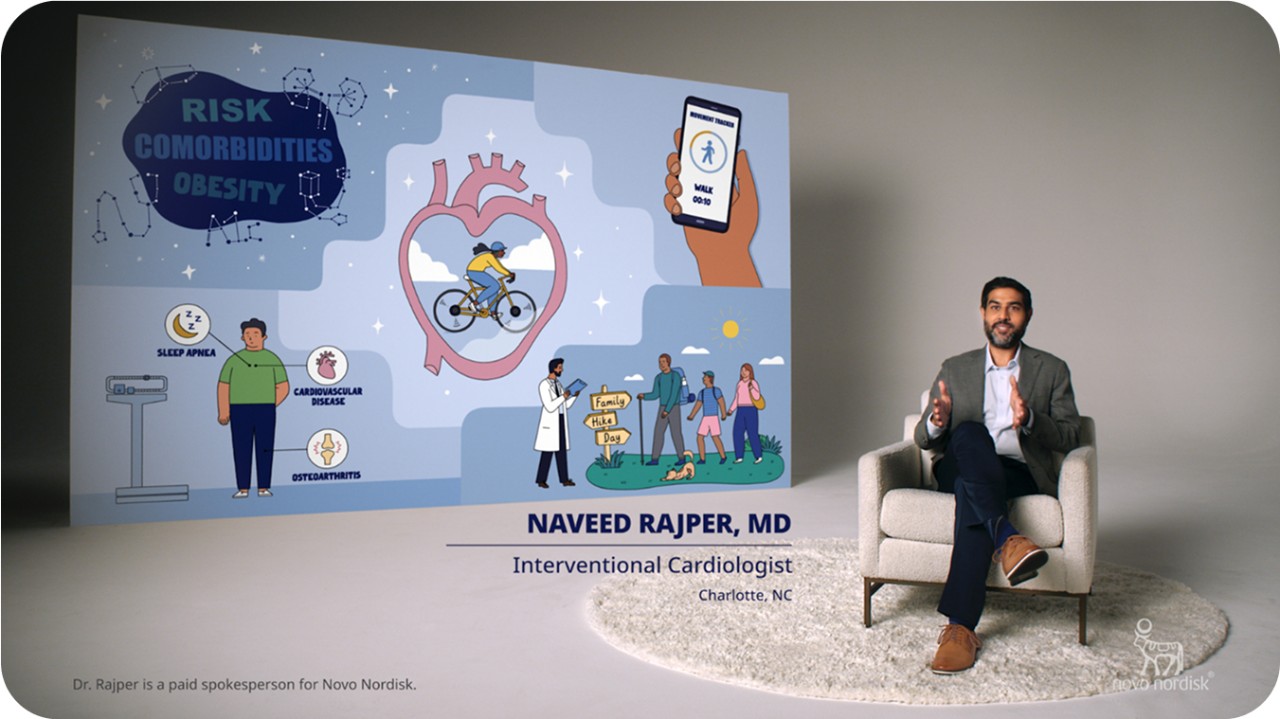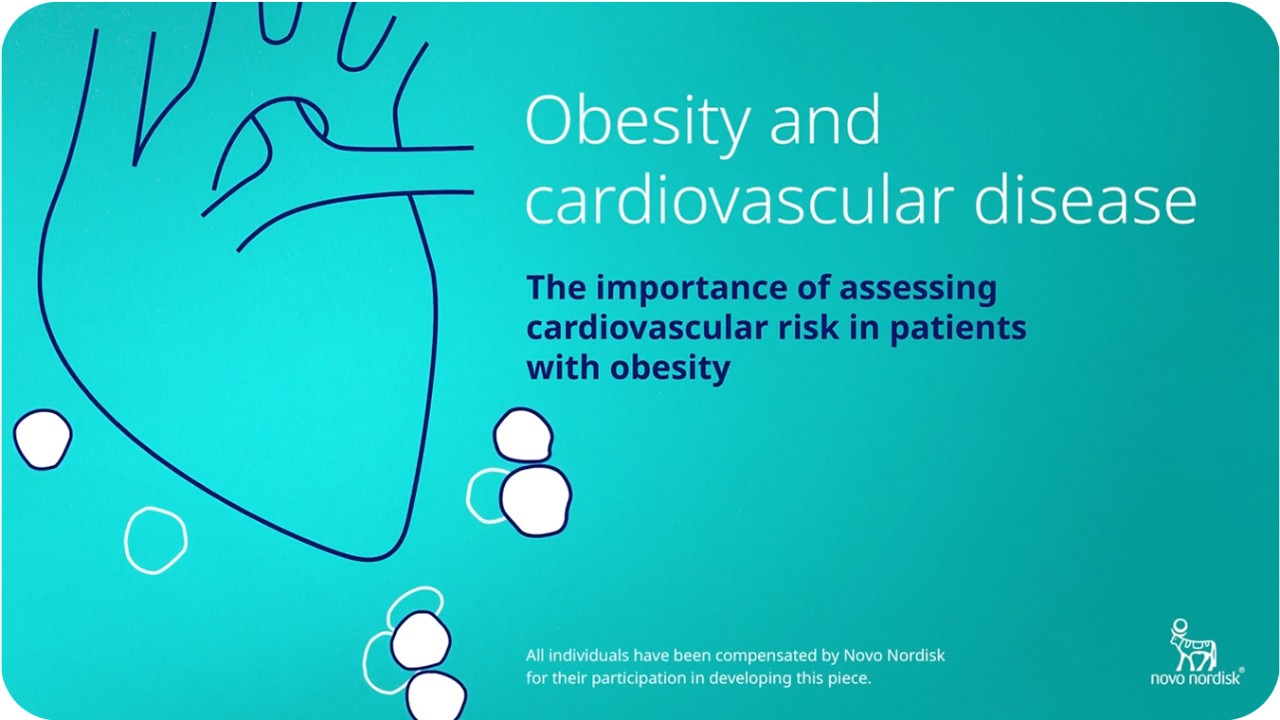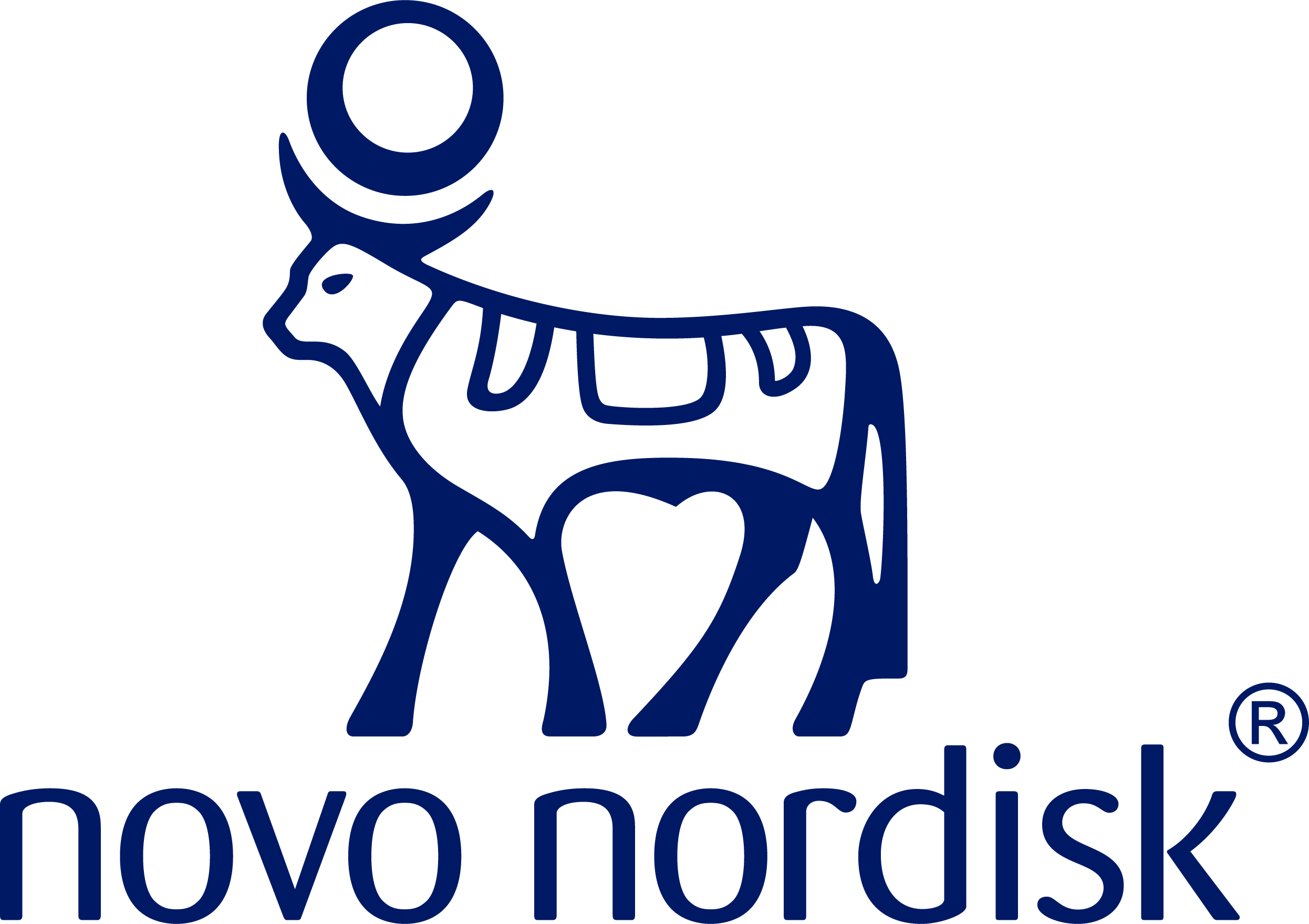Obesity and CVD risk
The conversation about obesity cannot wait for patients with CVD risk factors
Obesity can lead to enlarged adipose tissue cells, or adipocytes, which secrete adipokines that promote low-grade systemic inflammation.5,6 This increased adipose tissue can further lead to endothelial dysfunction, vascular breakdown, and structural and functional myocardial damage, contributing to serious cardiovascular conditions.6-8
CV, cardiovascular; CVD, cardiovascular disease.

“I tell my patients about the constellation of risks associated with obesity. These may include increased blood pressure, elevated cholesterol levels, and potentially increased risk of major cardiovascular events such as heart attack and stroke. And the longer they’re living with obesity, the risks can continue to increase.”1,9-11
Naveed Rajper, MD
Interventional Cardiologist
Obesity is associated with certain cardiometabolic risk factors, including hypertension, dyslipidemia, and type 2 diabetes2
A case-cohort study showed:
~6x
increased risk of developing type 2 diabetes compared with patients with normal weight12
A case-cohort study conducted from the Danish Diet, Cancer and Health cohort included 4,729 individuals who developed T2D and a randomly selected subcohort of 5,402 individuals. Participants were followed for a median of 14.7 years. The study assessed the joint association of genetic predisposition, obesity, and unfavorable lifestyle with the development of T2D. Genetic predisposition was quantified using a genetic risk score (GRS) based on 193 known T2D-associated loci. Body weight was categorized as normal, overweight, and obese. Lifestyle was evaluated using a score based on smoking, alcohol consumption, physical activity, and diet.12
~60
%
-70
%
prevalence of dyslipidemia compared with patients with normal weight13
Data from the National Health and Nutrition Examination Survey (1999-2002). Dyslipidemia was defined as having ≥1 of the following: total cholesterol ≥240 mg/dL, TGs ≥200 mg/dL, LDL cholesterol ≥160 mg/dL, or HDL cholesterol <40 mg/dL. The relationship between BMI and the prevalence of metabolic diseases, including dyslipidemia, was analyzed.13
Obesity and its related risk factors can lead to the development of cardiovascular diseases, including coronary artery disease, myocardial infarction, and heart failure
A UK population-based cohort study found9:

Study design: Population-based cohort study using data from the UK Clinical Practice Research Datalink (CPRD), a national representative database of routinely recorded primary care electronic health records. The study included 264,230 individuals aged ≥18 years with no preexisting records of CVD and with a recorded or computed BMI of ≥25 kg/m2. Participants were followed for a median duration of 10.9 years. The data were adjusted for age, sex, and comorbidities. Four distinct BMI trajectories were identified, with the Obesity Class 1 group having a mean baseline BMI of 33.7 kg/m2.9
CVD is the leading cause of death in people living with obesity,14 and the rate of obesity-related cardiovascular deaths increased
3x
between 1999 and 20204*
*Data are derived from the Multiple Cause of Death database citing 281,135 primary cardiovascular disease deaths in adults (>15 years old) with obesity as a contributing cause of death between 1999 and 2020. The cause of death extracted from physician-completed death certificates is available for all US residents and includes a single underlying cause of death and up to 20 contributing causes of death recorded using ICD-10 codes. Results were stratified by sex, age, urbanization status, and region of residence. Age-adjusted mortality rates were calculated using the direct standardization method based on the age-group weights from the 2000 US population. Cardiovascular deaths were categorized by ischemic heart disease, heart failure, hypertensive diseases, cerebrovascular disease, and other.4
The Constellation of Risks of Obesity
Dr. Rajper speaks about how he approaches patients with obesity as a cardiologist.

Video length: 1:30
Weight loss of
5%
to
15%
or more can improve9,10:
BMI, body mass index; CV, cardiovascular; CVD, cardiovascular disease; HDL, high-density lipoprotein; ICD, International Classification of Diseases; LDL, low-density lipoprotein; T2D, type 2 diabetes; TG, triglyceride.
The Importance of Assessing Cardiovascular Risk

Video length: 2:27

DIAGNOSING
Example patient profile with CVD risk
Review example profile of a patient with obesity who has CVD risks.
1. Tondt J, Freshwater M, Hurtado Andrade M, et al. Obesity algorithm 2024. Obesity Medicine Association. January 2024. Accessed June 11, 2025. https://obesitymedicine.org/resources/obesity-algorithm/
2. Powell-Wiley TM, Poirier P, Burke LE, et al; American Heart Association Council on Lifestyle and Cardiometabolic Health; Council on Cardiovascular and Stroke Nursing; Council on Clinical Cardiology; Council on Epidemiology and Prevention; and Stroke Council. Obesity and cardiovascular disease: a scientific statement from the American Heart Association. Circulation. 2021;143(21):e984-e1010.
3. Lopez-Jimenez F, Almahmeed W, Bays H, et al. Obesity and cardiovascular disease: mechanistic insights and management strategies. A joint position paper by the World Heart Federation and World Obesity Federation. Eur J Prev Cardiol. 2022;29(17):2218-2237.
4. Raisi-Estabragh Z, Kobo O, Mieres JH, et al. Racial disparities in obesity-related cardiovascular mortality in the United States: temporal trends from 1999 to 2020. J Am Heart Assoc. 2023;12(18):e028409.
5. Heymsfield SB, Wadden TA. Mechanisms, pathophysiology, and management of obesity. N Engl J Med. 2017;376(3):254-266.
6. Cercato C, Fonseca FA. Cardiovascular risk and obesity. Diabetol Metab Syndr. 2019;11:74.
7. Cohen JB. Hypertension in obesity and the impact of weight loss. Curr Cardiol Rep. 2017;19(10):98.
8. Csige I, Ujvárosy D, Szabó Z, et al. The impact of obesity on the cardiovascular system. J Diabetes Res. 2018;2018:3407306.
9. Iyen B, Weng S, Vinogradova Y, Akyea RK, Qureshi N, Kai J. Long-term body mass index changes in overweight and obese adults and the risk of heart failure, cardiovascular disease and mortality: a cohort study of over 260,000 adults in the UK. BMC Public Health. 2021;21(1):576.
10. Schnurr TM, Jakupović H, Carrasquilla GD, et al. Obesity, unfavourable lifestyle and genetic risk of type 2 diabetes: a case-cohort study. Diabetologia. 2020;63:(7)1324-1332.
11. Bays HE, Toth PP, Kris-Etherton PM, et al. Obesity, adiposity, and dyslipidemia: a consensus statement from the National Lipid Association. J Clin Lipidol. 2013;7(4):304-383.
12. Ryan DH, Yockey SR. Weight loss and improvement in comorbidity: differences at 5%, 10%, 15%, and over. Curr Obes Rep. 2017;6(2):187-194.
13. Garvey WT, Mechanick JI, Brett EM, et al; Reviewers of the AACE/ACE Obesity Clinical Practice Guidelines. American Association of Clinical Endocrinologists and American College of Endocrinology comprehensive clinical practice guidelines for medical care of patients with obesity. Endocr Pract. 2016;22(suppl 3):1-203.
14. Khafagy R, Dash S. Obesity and cardiovascular disease: the emerging role of inflammation. Front Cardiovasc Med. 2021;8:768119.




